|
|
|
|
Products mentioned in this Article
--None--
|
|
|
|
|
|
|
|
|
 |
|
|
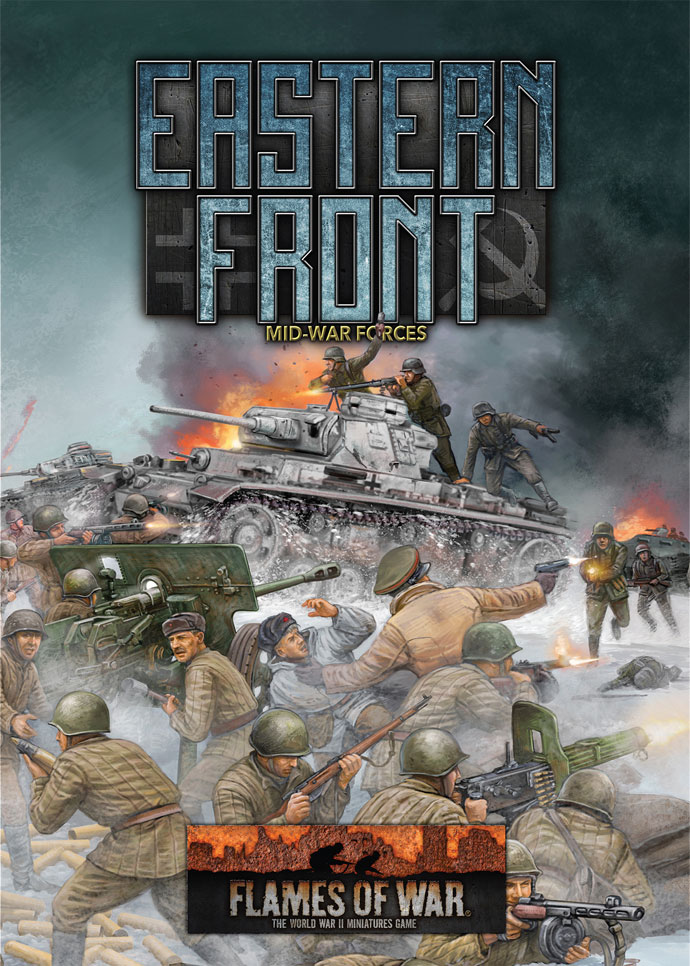 |
Dicker Max and Sturer Emil in Combat
Two prototypes of each of the German tank-hunter Mid-war Monsters, Sturer Emil and Dicker Max, saw service on the Eastern Front from 1941 to 1943.
See the Product Spotlight of the Dicker Max…
See the Product Spotlight of the Sturer Emil…
Dicker Max
The Dicker Max (meaning thick or fat Max) was developed from 1936, initially as a bunker buster, but later its role was changed to that of a tank-hunter. It was armed with the excellent 10.5cm K18 gun, a gun developed for counter-battery artillery fire with a high muzzle velocity.
|
The gun was fitted with a muzzle break to reduce recoil and stress on the vehicle chassis and gun mount. Two prototypes of this vehicle were completed January 1941. They were demonstrated to Hitler in March before being sent to the Eastern Front for testing.
The two prototypes were assigned to 521. Panzerjägerabteilung (521st Anti-tank Battalion) for Operation Barbarossa in July 1941. |
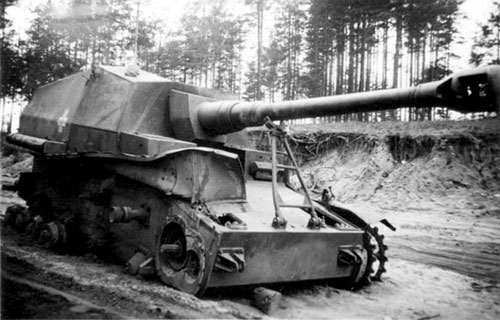 |
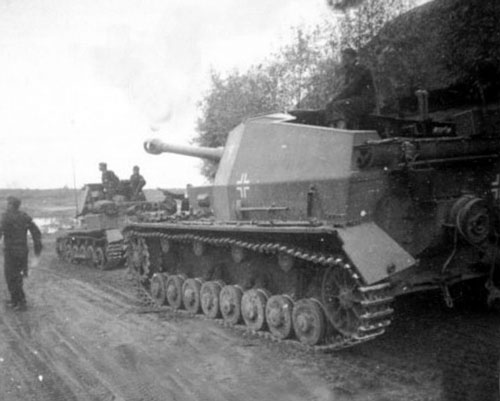 |
One Dicker Max caught fire by accident and was completely destroyed by the detonation of its ammunition. However, the other fought on successfully until the end of 1941.
It was rebuilt by Krupp during the first half of 1942 and returned to the 521. Panzerjägerabteilung in time to participate in Operation Fall Blau, the 1942 summer offensive in Russia. It was not reported as operational in reports made by the battalion in November to December 1942. |
| The following report explains some of the difficulties found operating the Dicker Max as part of the leading elements of a Panzer unit, which, in fact, may explain a lot more about the misunderstanding of the capabilities and role of the Dicker Max, rather than its short comings. |
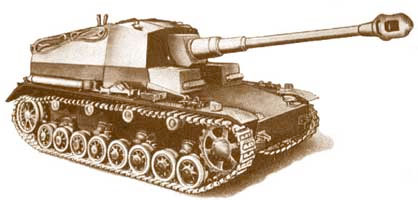 |
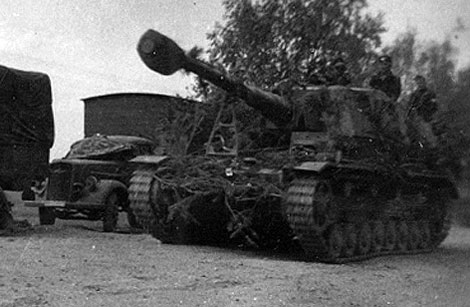 |
Dicker Max Lessons Learned Report 26 July 1941
"This self-propelled vehicle is not sufficiently manoeuvrable for employment in a Vorausabteilung (lead unit). The limited traverse makes it necessary to turn the entire vehicle to aim at targets. This takes considerable time when done repeatedly, especially off-road because of the heavy vehicle and weak engine. In addition, because of its armour layout - only thick in the front and 50 mm lower in the back - it was built for frontal use. |
|
The vehicle can be shot into from the side and rear. Employment in a leading unit requires the ability to quickly engage targets in every direction."
"The gun has proven itself capable of supporting an infantry attack from an open firing position by direct fire as in the Szczarar crossing. It is not possible to observe our own shots because of large dust clouds raised in front of the gun. The self-propelled guns must alternatively observe each other's fire or an observation post must be established off to one side,
|
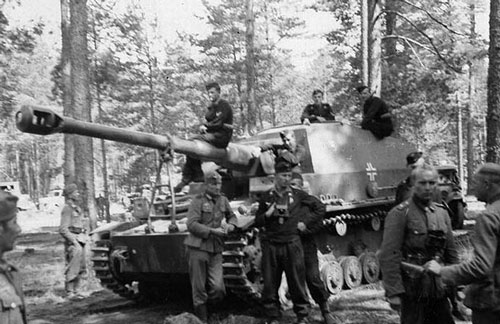 |
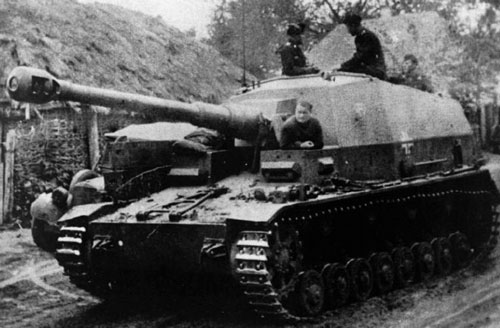 |
manned by a gunner familiar with the crew. Because of its size, lack of mobility, and large dust cloud raised when firing, in the future the self-propelled gun will only shoot Sprenggranaten (HE) by indirect fire."
"Up to now, the self-propelled gun has been employed in its specialized tasks - engaging concrete bunkers by direct fire and engaging heavy tanks in coordination with other anti-tank weapons. Its high penetration ability appears to be suitable for this."
|
|
"No specific problems have occurred with the engine or transmission. The steering brakes are overstressed. Bolts in the steering slide of one steering brake have torn out three times and the brake bands have had to be changed twice because the rivets were over-heated."
|
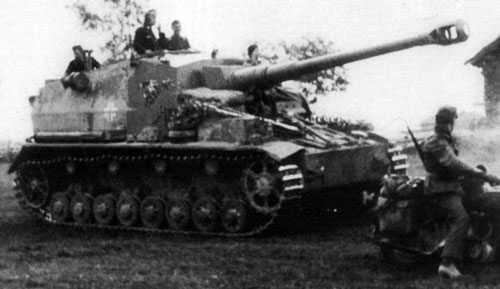 |
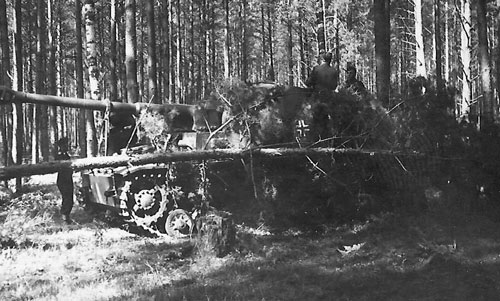 |
Other combat reports covering the Dicker Max point out that many engagements concurred at ranges at which the new 7.5cm L/46 and L/48 guns fixed to the Panzer IV tank, StuG G assault gun, and 7.5cm Pak40 gun were sufficient.
Specifications
10.5 cm K (gepanzerte Selbstfahrlafette) Dicker Max
In service: 1941 to 1942
Manufacturer: Krupp
Produced: 1941
Number built: 2
|
Weight: 22 tonnes
Length: 5.8 metres (19 ft) (excluding gun)
Width: 2.86 metres (9.4 ft)
Height: 2.53 metres (8.3 ft)
Crew: 5
Armour: 50mm - 10mm
Primary armament: one 10.5 cm schwere Kanone 18
Engine: 6.6 litres (400 cu in) 6-cylinder water-cooled Maybach HL66P, 180 horsepower (130 kW)
Ground clearance: 40cm (16 in)
Operational range: 170 kilometres (110 miles)
Speed: 27 kph (17 mph) |
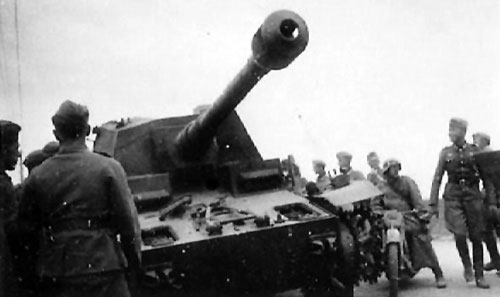 |
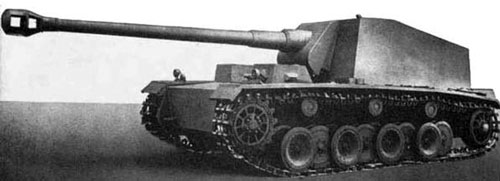 |
Sturer Emil
The 12.8cm Selbstfahrlafette auf VK3001(H) Sturer Emil (Stubborn Emil) was another experimental German self-propelled anti-tank gun. It was based on the Henschel VK3001 experimental medium tank chassis and armed with a Rheinmetall 12.8cm K L/61 gun (based on the 12.8cm FlaK40). |
|
From August 1941 to March 1942, Rheinmetall-Borsig and Henschel produced two prototypes.
Two vehicles (named Max and Moritz) were troop tested in Russia in mid 1942. Both prototypes performed successfully, but the development of this project was cancelled in favour of Tiger I.
|
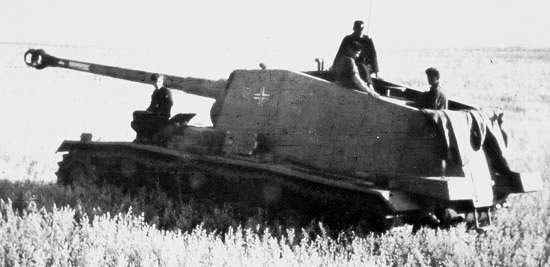 |
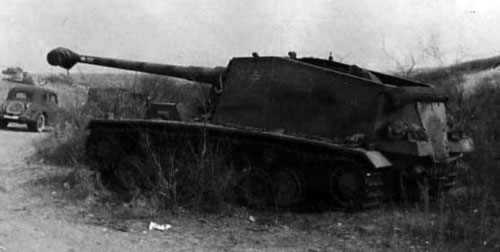 |
Both Sturer Emil tank-hunters saw service with 521. Panzerjägerabteilung in 1942. One of two prototypes was destroyed in combat, while the other one, with 22 kills rings painted on its gun barrel, was captured intact in January of 1943 in the Stalingrad area. |
|
It was shown at the captured equipment exhibitions in Moscow's Gorky Park in 1943 and 1944. Today, the one captured by the Red Army can be seen in the Museum of Armoured Forces in Kubinka, Russia.
Specifications
12.8cm Selbstfahrlafette auf VK3001(H) Sturer Emil
In service: 1942 to 1943
Manufacturer: Henschel, Rheinmetall-Borsig
Produced: 1942
Number built: 2
Weight: 35 tonnes
Length: 9.7 metres (31.82 ft) (excluding gun)
Width: 3.16 metres (10.36 ft)
Height: 2.7 metres (8.86 ft)
|
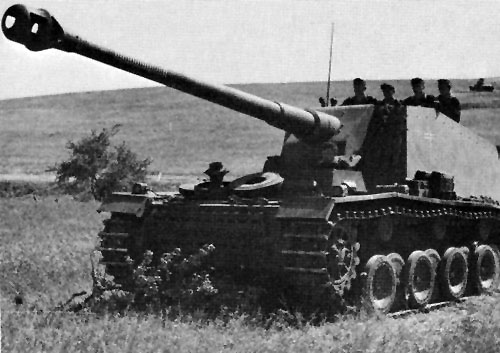 |
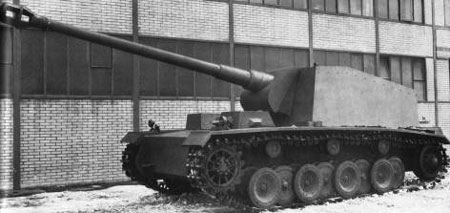 |
Crew: 5
Armour: 50mm - 15mm
Primary armament: one 12.8cm Kanone L/61
Engine: 6-cylinder water-cooled Maybach HL116, 300 horsepower
Speed: 25 kph (15.53 mph)
|
521. Panzerjägerabteilung on the Eastern Front
521. Panzerjägerabteilung was attached to the following formations from Operation Barbarossa to the fall of Stalingrad: |
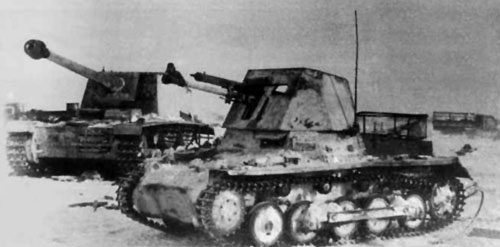 |
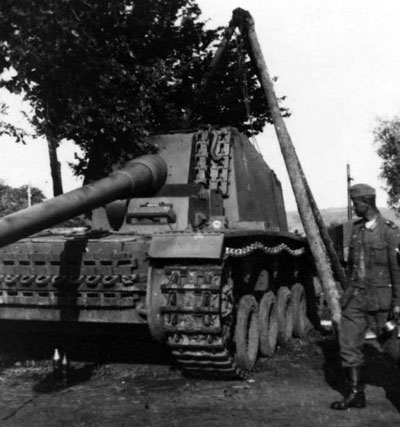 |
22 June 1941: XXIV Panzerkorps, Second Panzer Group, Army Group Centre (with 4.7cm Panzerjäger I tank-hunters).
Mid-August 1941: XXIV Panzerkorps, Second Panzer Group, Army Group Centre.
29 September 1941: Second Panzer Group, Army Group Centre, Operation Typhoon.
28 Jun 42: XVII Korps, Sixth Army, Army Group South (with two companies of Marder II tank-hunters, one company of Panzerjäger I tank-hunters, and one platoon with two 12.8cm Sturer Emil tank-hunters and one 10.5cm Dicker Max tank-hunter).
January 1943: Destroyed at Stalingrad
|
Last Updated On Thursday, September 22, 2022 by Wayne at Battlefront
|
|
|